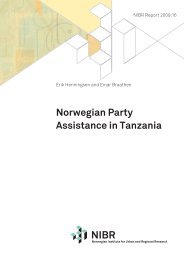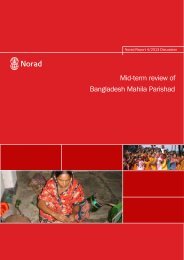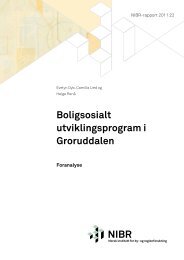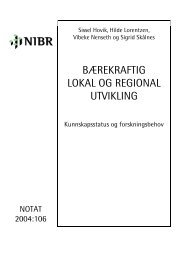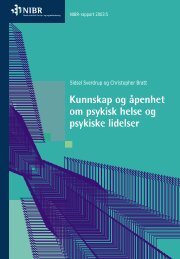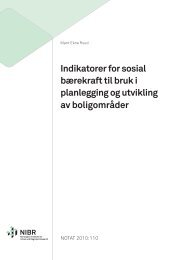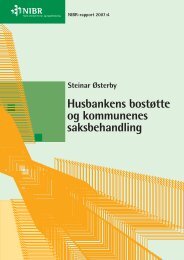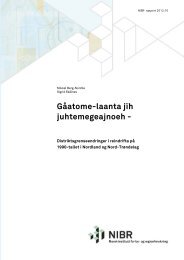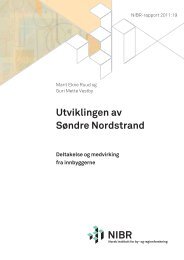http://www.tandfonline.com/page/terms-andconditions
The special importance of housing policy for ethnic minorities ...
The special importance of housing policy for ethnic minorities ...
- No tags were found...
You also want an ePaper? Increase the reach of your titles
YUMPU automatically turns print PDFs into web optimized ePapers that Google loves.
International Journal of Housing Policy 15Downloaded by [Norsk Institutt for By og] at 07:07 11 March 2013immigrants do not very often live in private renting. A Danish study (Skifter Andersen,2010) has shown that after taking into account that immigrants’ in<strong>com</strong>es are lower thanthe average, immigrants have a 60% lower probability of living in private rented dwellings.Immigrants thus less often live in private renting in Denmark than what would be expectedconsidering their lower in<strong>com</strong>es.In Norway and Sweden, cooperatives are important for immigrants, who are overrepresentedin the sector in both countries, especially Sweden. One reason could be that thereis little room for discrimination in the access process. Again the Danish case differs greatlyfrom the others, because immigrants less often live in cooperatives than the population as awhole. Considering their in<strong>com</strong>es, the probability of immigrants moving into cooperativesis much smaller again because low-in<strong>com</strong>e groups in Denmark more often move intocooperatives (Skifter Andersen, 2010).The calculated index of segmentation shown at the bottom of Table 9 indicates substantialdifferences between immigrants’ position on the housing market in the four countries.Finland is the country where the largest deviation is found between immigrants’ housingtenure and the rest of the population. Denmark has the second largest deviation followedby Sweden. In Norway, immigrants’ housing tenure is most like the national average.OvercrowdingOur second measure to <strong>com</strong>pare immigrants housing position between four Nordic countriesis relative overcrowding. Table 10 shows figures for overcrowding measured as theproportion of residents living in dwellings with less than one room per person. The relativedifference between immigrants and the whole population is calculated as the percentage bywhich overcrowding for immigrants exceeds overcrowding for the whole population.The figures are not quite <strong>com</strong>parable. In Norway, the number of households is reducedwith single adults in one-room dwellings, but this has only a small effect on the <strong>com</strong>parisonbetween the countries.Table 10 shows that overcrowding among immigrants is much more <strong>com</strong>mon in Norwaythan in the other countries. Compared with the whole population, immigrants live five tosix times more often in overcrowded housing. Immigrants’ housing in Finland is alsoquite often overcrowded but this can partly be explained by a generally high degree ofovercrowding in the country. Immigrants’ level of overcrowding is close to the same levelTable 10. Proportion of immigrants and whole population living in densely populated housing ∗ inthe Nordic countries (%).Denmark Finland Norway SwedenWhole population 7 18 8 16Immigrants 28 41 45 26Relative difference % 289 128 463 61∗ More than one person per room (kitchen and bath excluded).Denmark:. Foreign-born persorns and their children 2008 16+ years. Database at the Danish Building ResearchInstitute based on data from Statistics Denmark.Finland: Data on households 31.12.2008, immigrants = households headed by a foreign-speaking person, Source:Statistics Finland.Norway: Source: Foreign-born persons and their children. Age 16—70 years. Statistics Norway. Level of livingamong immigrants 2005/2006. Survey to a representative selection among 10 groups. Level of living in the wholepopulation 2007. Single adults in one-room dwellings excluded.Sweden: Foreign–born persons 16+ years. Statistic Sweden, Survey on living conditions 2007.



